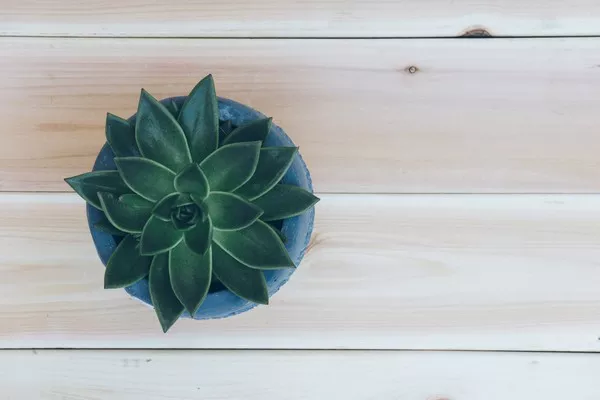Rose Cabbage Succulent, also known as Kalanchoe thyrsiflora or Paddle Plant, is a popular succulent with stunning foliage that resembles rosettes of cabbage. It is an excellent addition to any indoor or outdoor garden due to its unique appearance and low maintenance requirements. One of the most rewarding aspects of owning succulents is the ability to propagate them, allowing you to expand your collection or share them with friends and family. In this comprehensive guide, we will delve into the art of propagating Rose Cabbage Succulent, exploring various methods and closely related topics to ensure successful propagation.
1. Understanding Rose Cabbage Succulent
Before diving into the propagation techniques, it is essential to have a good understanding of the Rose Cabbage Succulent itself. This section will cover key information about the plant, including its origin, characteristics, and growth habits. Rose Cabbage Succulent is native to South Africa and belongs to the Crassulaceae family. It features large, fleshy leaves that are often blue-gray or green, with red or purple margins, creating a striking contrast. The plant is a slow grower and can reach a height of up to 2 feet (60 cm) with proper care. Understanding the plant’s natural habitat and growth requirements will help you create the ideal conditions for successful propagation.
2. Propagation Methods
Rose Cabbage Succulent can be propagated through various methods, including leaf cuttings, stem cuttings, and offsets. Each method has its own advantages and challenges.
Leaf Cuttings
Leaf cuttings are a popular propagation method for many succulents, including Rose Cabbage Succulent. To propagate using leaf cuttings, follow these steps:
Gently twist or cut a healthy leaf from the mother plant, ensuring it is intact and free from any damage.
Allow the leaf cutting to dry for a few days, allowing a callus to form at the base of the leaf.
Prepare a well-draining soil mixture and plant the leaf cutting, burying the base of the leaf into the soil.
Place the cutting in a bright location with indirect sunlight and mist the soil occasionally to maintain moisture.
After a few weeks, roots will start to develop, followed by new rosettes.
Once the new plantlet has established a root system, it can be transplanted into its own container.
Stem Cuttings
Stem cuttings are another effective method to propagate Rose Cabbage Succulent. The process involves the following steps:
Select a healthy stem from the mother plant and make a clean cut, ensuring it is several inches long.
Allow the stem cutting to dry for a few days, enabling a callus to form at the cut end.
Prepare a well-draining potting mix and plant the stem cutting, burying the cut end into the soil.
Place the cutting in a warm, bright location with indirect sunlight and mist the soil occasionally to maintain humidity.
Within a few weeks, the cutting will develop roots, and new growth will emerge.
Once the new plantlet has established a root system, it can be potted individually.
Offsets
Rose Cabbage Succulent produces offsets or “pups” as a natural means of propagation. These small plantlets can be separated from the mother plant and replanted individually. To propagate using offsets, follow these steps:
Carefully remove the offset from the base of the mother plant, ensuring it has its own roots.
Allow the offset to dry for a day or two to prevent rotting.
Prepare a well-draining soil mixture and plant the offset, burying the roots into the soil.
Place the offset in a bright location with indirect sunlight and water sparingly to avoid overwatering.
The offset will continue to grow and develop into a mature plant.
3. Care and Maintenance
Once you have successfully propagated your Rose Cabbage Succulent, it is crucial to provide proper care and maintenance to ensure its healthy growth. Here are some essential tips to consider:
Light: Rose Cabbage Succulent thrives in bright, indirect sunlight. Place the plant in a location that receives at least 6 hours of sunlight per day, but avoid exposing it to harsh, direct sunlight, which can cause leaf burn.
Watering: Succulents have low water requirements, and overwatering can be detrimental to their health. Allow the soil to dry out completely between waterings, and always ensure proper drainage to prevent root rot. Water sparingly during winter months when the plant is in a dormant phase.
Soil and Fertilization: Rose Cabbage Succulent prefers well-draining soil. Use a commercial succulent or cactus potting mix, or create your own mixture by combining perlite, sand, and regular potting soil. Fertilize the plant sparingly during the growing season with a balanced succulent fertilizer.
Temperature and Humidity: Rose Cabbage Succulent thrives in average room temperatures ranging between 60°F and 75°F (15°C to 24°C). It can tolerate higher temperatures but may require more frequent watering during hot weather. Maintain moderate humidity levels, as excessive humidity can lead to fungal diseases.
4. Troubleshooting Common Issues
Even with proper care, succulents can encounter certain problems. Here are some common issues and their solutions:
Overwatering: If the leaves appear mushy and translucent, it is a sign of overwatering. Adjust your watering schedule and ensure the plant is in well-draining soil.
Underwatering: When the leaves become shriveled and start to curl, it indicates underwatering. Increase your watering frequency and ensure the soil is thoroughly moistened during each watering session.
Pests: Rose Cabbage Succulent is generally resistant to pests. However, mealybugs and aphids can occasionally infest the plant. Treat affected areas with a gentle insecticidal soap or wipe them off with a cotton swab dipped in alcohol.
Conclusion
Propagating Rose Cabbage Succulent can be a rewarding and enjoyable experience for succulent enthusiasts. By understanding the plant’s characteristics and employing the appropriate propagation methods, you can expand your succulent collection and share the beauty of these unique plants with others. Remember to provide proper care, including adequate light, water, and well-draining soil, to ensure the healthy growth of your propagated plants. With patience and dedication, you can enjoy the beauty of Rose Cabbage Succulent for years to come.


